Contracted to Cliff Care, with bespoke construction in situ by Geoff Ellis & team
The first bluff bridge to be built which tested the theory and established some good practices.
Accessed by road from Cornish Point
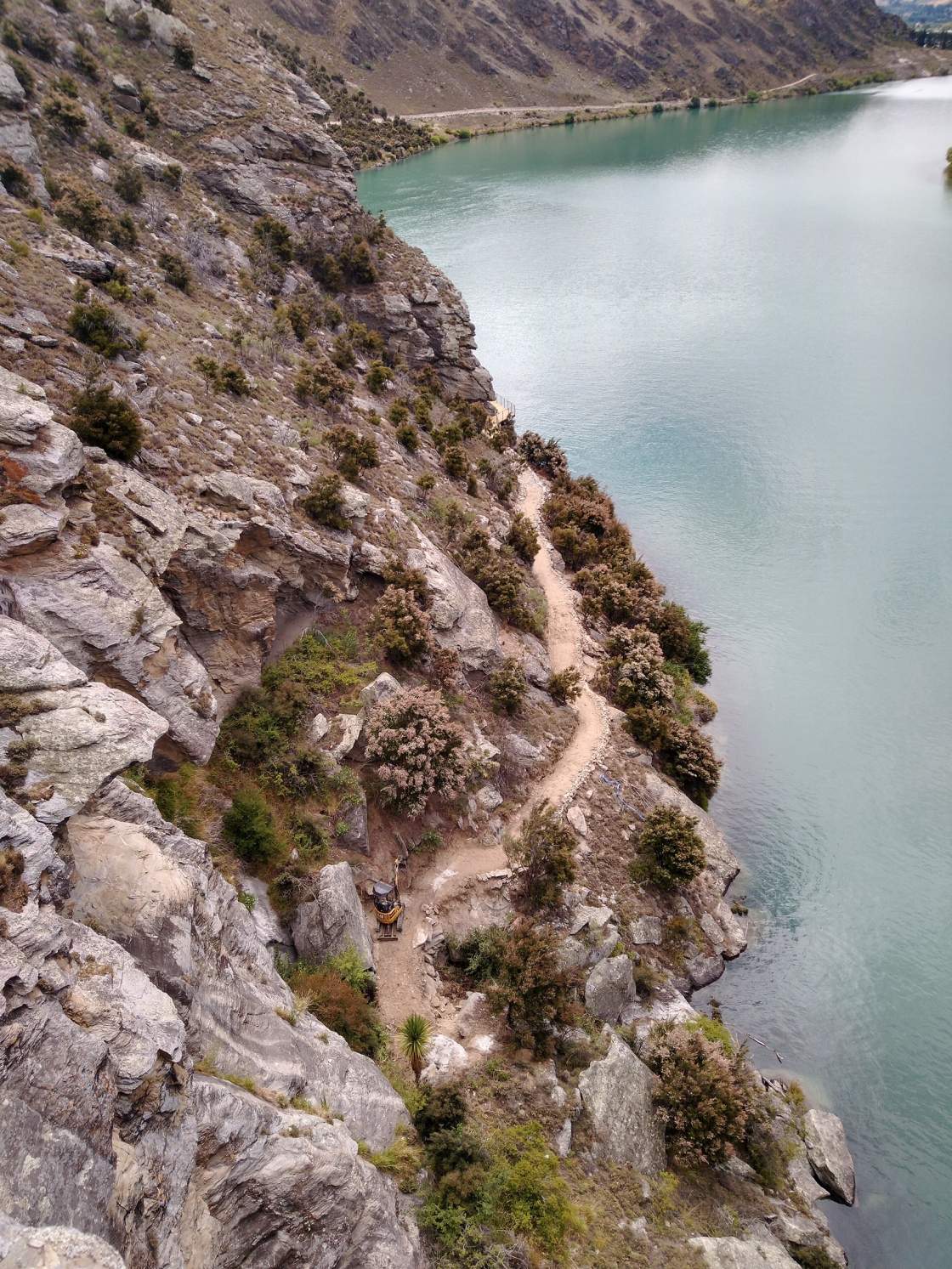

Rob's Gulch - Hand Cut Trail
Hand cut track to the Reilly Bluff Bridge. Rock stacking and tested the deck of the bridge with the little digger.
After both bridges built the track between 2 bridges was top coated via helicopter, compacted and completed in 4 hours.

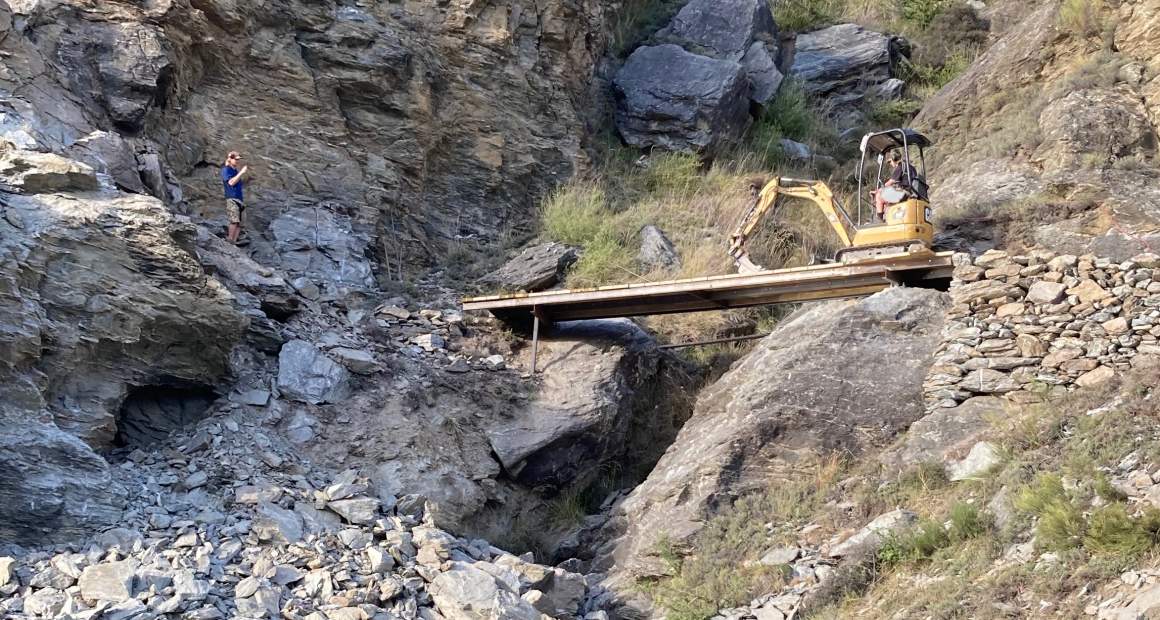
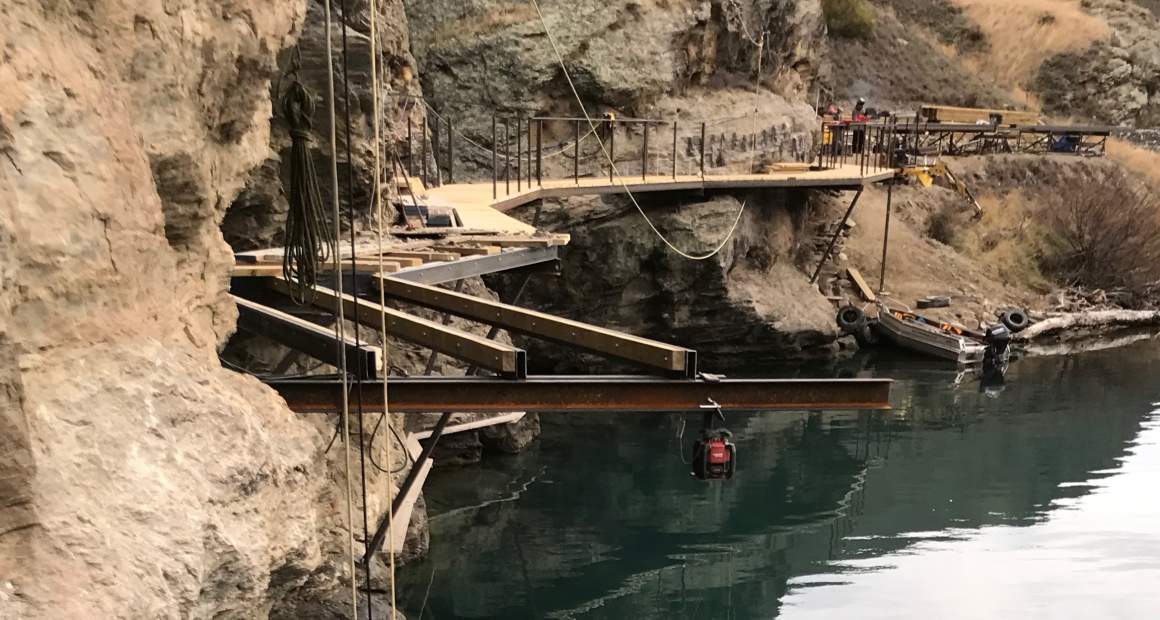
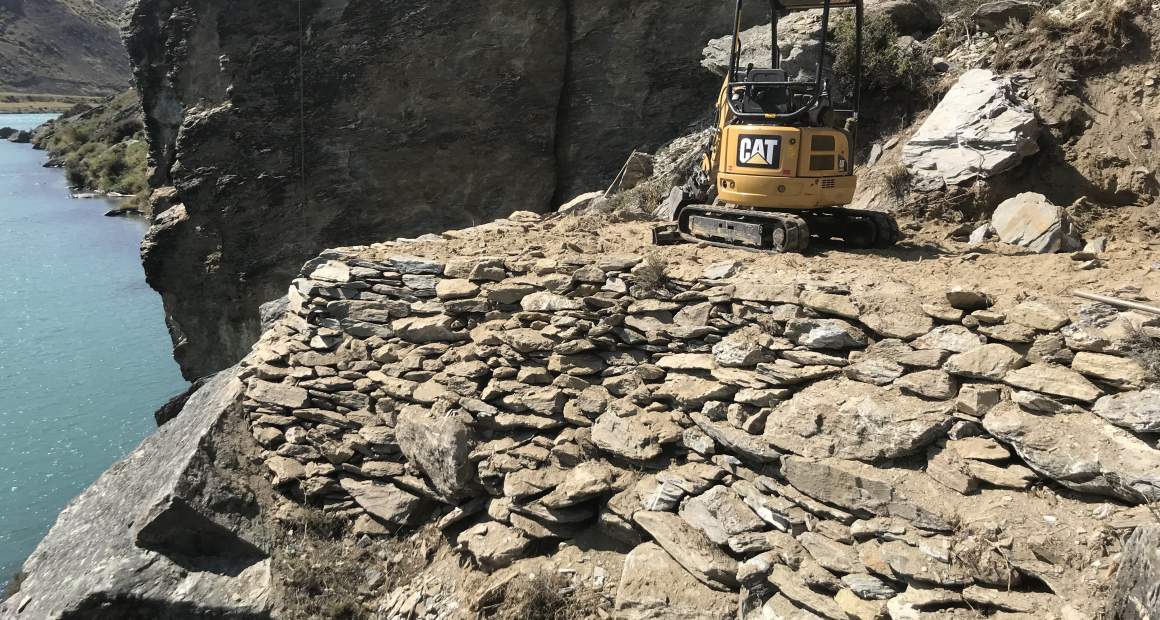
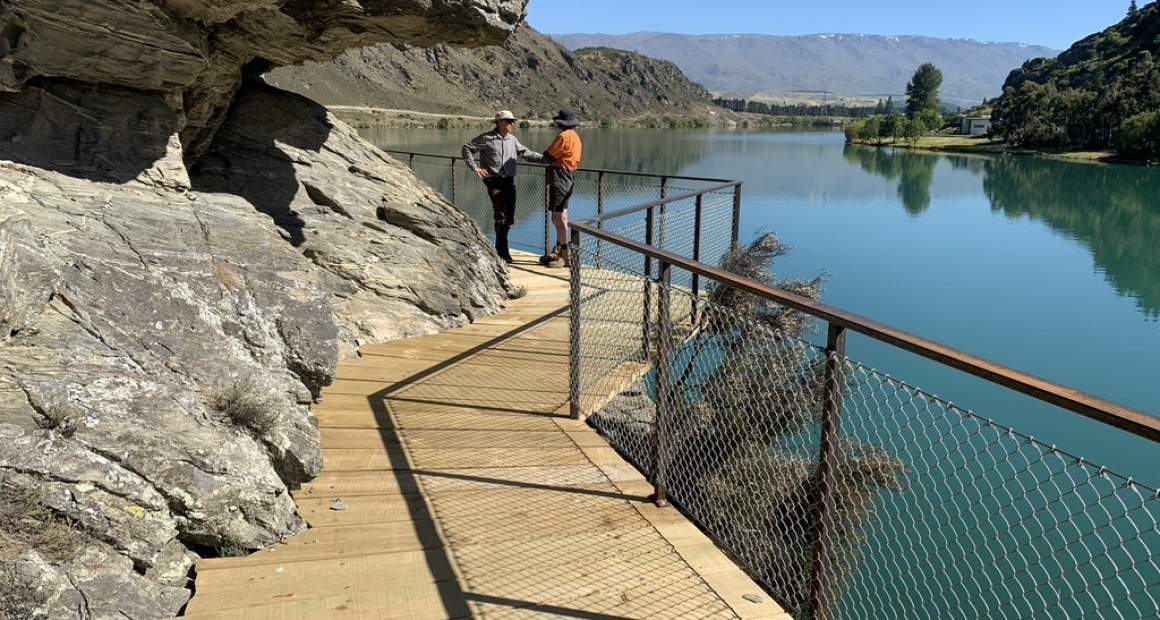
Pickaxe Bluff was so named for the pickaxe found buried deep in the rock.
Designing and constructing the bridge that guides you around this bluff was a feat of engineering.
Can you spot the pickaxe?
Pickaxe Bluff was so named for the pickaxe found buried deep in the rock during construction. Can you spot it?
Designing and constructing the bridge that guides you around this bluff was a feat of engineering.
The Otago Provincial Government encouraged miners, mainly from Guangdong in China, to come here and replace the European miners, who by 1866, were off to new rushes on the West Coast. The Chinese came to earn wealth for their families and intended to eventually return home.
Their mining methods were unique; they worked methodically, leaving very little gold behind.
Gold mining was tough, physical work. The Chinese miners used pickaxes to break rock ready for sieving, sorting and washing through a sluice box. Riffle, or sluice boxes, nicknamed Long Toms, were long, terraced wooden boxes, over which gold-bearing gravel was washed using the river's current. Each step of the box had a lip to trap the heavier gold, while lighter materials washed away.
The heavy gravel and gold caught in the terraces was carefully washed again using a gold pan.
A Feat of Engineering
As you work your way across the bridge searching for the pickaxe still visible in the rock wall, take note of how the bridge you are riding and walking on has been constructed.
No other cycle trail in Aotearoa New Zealand has the same type of bridge bolted directly onto rock faces. No other trail also has anywhere near this scale of rock face bridges, suspension or otherwise, as the Lake Dunstan trail.
This was one of Aotearoa New Zealand's most challenging trail building projects. Along the trail, you will traverse a total length of 450 metres of bolt-on bridges, over 8 sites.
Each bridge took a lot of skill. Loose rock was first scaled by abseilers, then cliff-face scaffolding created. Anchor holds were drilled for steel plates, to which transom and support props were welded. Deck joists were then lifted into place and welded to the transoms. Decking and hand rails completed the project.
These bridges are an innovative solution to making vertical rock faces accessible for you, with the minimum of physical disruption, environmental and visual impact.













